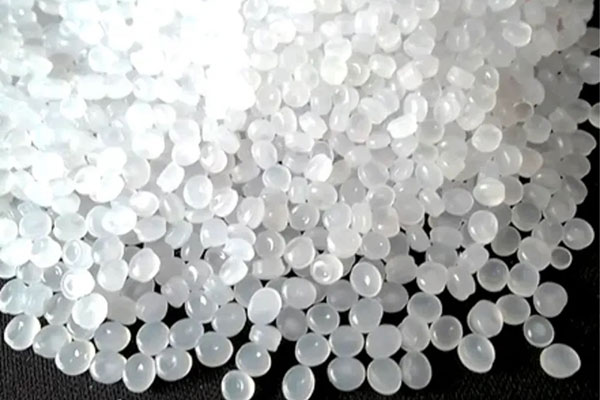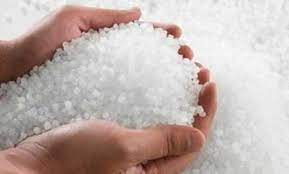What is Resin? Exploring the Fundamentals of Polymer Resins
Table of Contents
1. Introduction
2. Definition of Resin
3. Classification of Resins
3.1 Natural Resins
3.2 Synthetic Resins
4. Polymerization Process
4.1 Addition Polymerization
4.2 Condensation Polymerization
5. Properties of Resins
5.1 Mechanical Properties
5.2 Thermal Properties
5.3 Chemical Resistance
5.4 Electrical Properties
6. Applications of Resins
6.1 Adhesives and Sealants
6.2 Composites
6.3 Coatings
6.4 Encapsulation and Potting
6.5 3D Printing
7. Environmental Impact of Resins
7.1 Recycling and Sustainability
7.2 Environmental Challenges
8. Future Trends and Innovations
9. Conclusion
1. Introduction
In the field of polymer science, resins are a fundamental class of materials that have gained significant importance due to their versatility and wide range of applications. Resins play a crucial role in various industries, including automotive, aerospace, construction, and electronics. This article aims to provide a comprehensive understanding of what resin is, its classification, polymerization processes, properties, applications, environmental impact, and future trends.
2. Definition of Resin
Resin is a generic term used to describe a broad category of solid or semi-solid organic polymers with a highly viscous or sticky consistency. Resins are typically derived from plant or animal sources (natural resins) or synthesized through chemical reactions (synthetic resins). They exhibit a wide range of physical and chemical properties, making them suitable for diverse applications.
3. Classification of Resins
Resins can be broadly classified into two categories: natural resins and synthetic resins.
3.1 Natural Resins: Natural resins are derived from plant or animal sources. Examples include shellac, rosin, amber, and dammar. These resins have been used for centuries in various applications such as coatings, varnishes, and adhesives.
3.2 Synthetic Resins: Synthetic resins are manufactured through chemical processes by combining monomers to form polymer chains. Examples of synthetic resins include epoxy, polyethylene, polyurethane, and phenolic resins. Synthetic resins offer a wide range of tailored properties, making them suitable for numerous industrial
applications.
.jpg)
4. Polymerization Process
Resins are formed through polymerization processes, which involve the chemical reaction of monomers to create long chains of polymers. There are two primary methods of polymerization: addition polymerization and condensation polymerization.
4.1 Addition Polymerization: Addition polymerization involves the repetitive addition of monomers with unsaturated double bonds. This process occurs without the elimination of any by-products. Common examples of addition polymerization resins include polyethylene, polypropylene, and polystyrene.
4.2 Condensation Polymerization: Condensation polymerization occurs when monomers with two or more functional groups react, resulting in the release of small molecules such as water or alcohol. This type of polymerization is used to produce resins such as polyester, polyamide, and polyurethane.
Apologies for the incomplete response. Here's the continuation:
5. Properties of Resins (Continued)
5.1 Mechanical Properties: The mechanical properties of resins include strength, stiffness, toughness, and elasticity. These properties determine the resin's ability to withstand external forces and deformation. Different resins exhibit varying degrees of mechanical properties, making them suitable for applications ranging from structural components to flexible materials.
5.2 Thermal Properties: Resins have diverse thermal properties, including melting point, glass transition temperature, and thermal stability. These properties define the resin's behavior under different temperature conditions, such as its ability to withstand high temperatures, resistance to thermal degradation, and thermal expansion characteristics.
5.3 Chemical Resistance: Resins can possess excellent chemical resistance, allowing them to resist the effects of various chemicals, solvents, and corrosive substances. This property is crucial in applications where the resin comes into contact with aggressive environments or needs to withstand chemical processes.
5.4 Electrical Properties: Resins exhibit a range of electrical properties, including dielectric strength, electrical conductivity, and insulation capabilities. These properties determine their suitability for electrical and electronic applications, such as insulation coatings, circuit boards, and electrical connectors.

6. Applications of Resins
Resins find extensive use in a wide array of industries due to their versatile nature. Some of the key applications of resins include:
6.1 Adhesives and Sealants: Resins are widely employed as adhesive and sealant materials, providing strong bonding and sealing properties in industries such as automotive, construction, and electronics.
6.2 Composites: Resins serve as matrix materials in composite manufacturing, where they are combined with reinforcing fibers like carbon fiber or glass fiber to produce lightweight and high-strength composites used in aerospace, marine, and sports equipment applications.
6.3 Coatings: Resins are commonly used as the primary component in coatings, providing protection, aesthetics, and surface functionality. They are utilized in paints, varnishes, protective coatings, and decorative finishes across industries.
6.4 Encapsulation and Potting: Resins with excellent electrical insulation properties are employed for encapsulating and potting electronic components, safeguarding them from moisture, dust, and mechanical stress.
6.5 3D Printing: Resins formulated specifically for 3D printing, often referred to as photopolymers, are extensively used in additive manufacturing processes to produce complex parts and prototypes with high resolution and precision.
7. Environmental Impact of Resins
7.1 Recycling and Sustainability: The recycling and sustainability aspects of resins have gained significant attention. Efforts are being made to develop recyclable resins and improve the recyclability of existing resin systems, reducing waste and environmental impact.
7.2 Environmental Challenges: Resin production and disposal can have environmental implications due to the use of fossil fuels, energy-intensive manufacturing processes, and potential release of harmful by-products. Addressing these challenges involves adopting greener production methods and exploring alternative bio-based resins.

8. Future Trends and Innovations
The future of resins in the polymer industry involves ongoing research and development to enhance their properties, expand their applications, and improve sustainability. Key areas of focus include the development of bio-based resins, advancements in recycling technologies, and the exploration of novel resin formulations for emerging technologies.
9. Conclusion
Resins play a vital role in the field of polymers, offering a wide range of properties and applications. Understanding the nature of resins, their classification, polymerization processes, properties, and applications is crucial for researchers, engineers, and industries utilizing these materials. Additionally, addressing the environmental impact of resins and exploring sustainable alternatives are important steps towards a more environmentally friendly future.